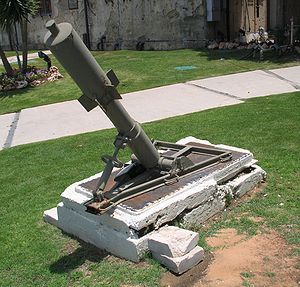Givati Brigade Museum
August 20th 2014
 If you’re interested in military sites in general, or want to learn more about Israel’s crucial War of Independence of 1948, a visit to the Givati Brigade Museum should definitely be on your itinerary.
If you’re interested in military sites in general, or want to learn more about Israel’s crucial War of Independence of 1948, a visit to the Givati Brigade Museum should definitely be on your itinerary.
Located between the cities of Ashdod and Kiriyat Gat in the western part of Israel, the museum, known in Hebrew as the Beit Hativat Givati Museum, was built on the site of the final battle of the War of Independence. The museum is located in the Yoav Fortress, a monster of a building that was named after the brave Palmach commander, Yitzhak Dubno Negba, whose nickname was Yoav. The building also served as a British police station prior to the establishment of the State. The museum’s main heritage center is located inside the Yoav Fortress and a distinctive, arrow-shaped monument to the Givati Brigade stands outside.
One of the museum’s two main exhibits focuses on the story of Givati during the War of Independence. In the theatre, visitors screen a powerful sound and light show that makes the famous battle of 1948 come alive. In this historic battle, the Givati Brigade roundly defeated the Arab enemy and brought security to Tel Aviv and the road to Jerusalem.
Experiencing this exhibit will give you a deep appreciation for the brave spirit of the young fighters who faced an Egyptian army that outnumbered them and their weapons many times over. It took Givati seven attempts to retake the Fortress during the War of Independence. The determination of the young soldiers is inspiring. Both Egyptian and Israeli weapons are on display, as are the vehicles that saw action in the battle of 1948. The museum is also careful to highlight the cooperation that existed between the IDF and regional defense that was provided by civilians.
A second exhibit illustrates the story of the Givati Brigade and what it has accomplished since its rebirth in 1983. In this role, it honors the memory of all soldiers who served with Givati and fell in defending the State of Israel. The site includes a memorial wall inscribed with the names of fallen Givati soldiers as well as some of their personal letters and an information database.
In this second main exhibit, visitors learn about the history and current activities of the Givati Division and how the Givati soldiers today are trained. Tour guides are soldiers on active duty from the Givati Brigade.











